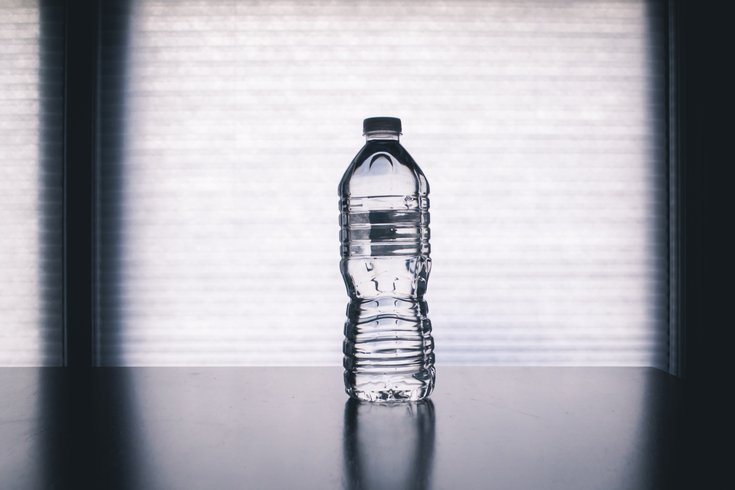
January 10, 2024
 Steve Johnson/Unsplash
Steve Johnson/Unsplash
New research says one liter of bottled water contains an average of 240,000 nanoplastics, which are even tinier and more dangerous than microplastics.
People who drink from disposable water bottles may be ingesting many more tiny plastic particles than scientists previously thought, according to new research.
A study published Monday estimates that, on average, one liter of bottled water contains 240,000 nanoplastics. Researchers estimate there is 10 to 100 times more plastic in bottled water than scientists previously thought, according to NPR.
While microplastic particles measure less than five millimeters, or smaller than a grain of rice, nanoplastic particles measure less than one micrometer, or less than one-seventieth the width of a human hair. The study's authors call nanoplastics more "toxic" than microplastics, since their tinier size makes it easier for them to enter the human body.
Using a method that involves aiming lasers at a water sample and observing the resonance of different molecules, researchers identified seven types of plastic molecules in a sample of three types of bottled water. Pieces of PET (polyethylene terephthalate), which constitute most plastic water bottles, and polyamide, a type of plastic that is present in water filters, were both found. Researchers hypothesize that plastic is entering the water from the bottle and through the filtration process.
The study, published in the Proceedings of the National Academy of Sciences, also solidified the notion that nanoplastics are likely to appear in larger numbers than microplastics. Researchers determined that 90% of the plastic particles found in the sample were nanoplastics and that only 10% were microplastics. The study's authors said the amount of nanoplastics found was "orders of magnitude more than the microplastic abundance reported previously in bottled water."
Where do all these plastics come from? Plastics continuously fragment in the environment, shredding into smaller and smaller fibers that infiltrate the air we breathe, the clothes we wear and food and beverages we consume, according to National Geographic. Scientists' concern over microplastics has increased in recent years as studies have found the tiny plastics deep within the human body, including the lungs and blood. Microplastics in the body can cause hormone disruption, weight gain, resistance to insulin, decreased reproductive health and cancer, according to the United Nations Development Programme.
Scientists say further research is necessary to determine if drinking bottled water containing nanoplastics could lead to adverse health effects.
"Whatever microplastic is doing to human health, I will say nanoplastics are going to be more dangerous," study author and Columbia chemistry professor Wei Min told the Washington Post.
Experts say people should not limit their water intake out of a fear of tiny plastics.
"If people are concerned about nanoplastics in bottled water, it’s reasonable to consider alternatives like tap water," study author Beizhan Yan told Healthline. "However, it’s important to emphasize that staying hydrated is crucial for health. Therefore, we do not advise against drinking bottled water when necessary, as the risk of dehydration can outweigh the potential impacts of nanoplastics exposure."
There are plenty of alternatives to disposable plastic bottles. Several popular reusable bottles and cups are on the market today, including the headline-making Stanley tumblers, as well as products from Hydro Flask, Nalgene and Yeti.
Those who opt for reusable bottles should make sure they clean them regularly, though, to avoid running into other health snafus. A recent study likened reusable water bottles to "portable Petri dishes," revealing they can host 40,000 times more bacteria than the average toilet seat.
Follow Franki & PhillyVoice on Twitter: @wordsbyfranki
| @thePhillyVoice
Like us on Facebook: PhillyVoice
Have a news tip? Let us know.